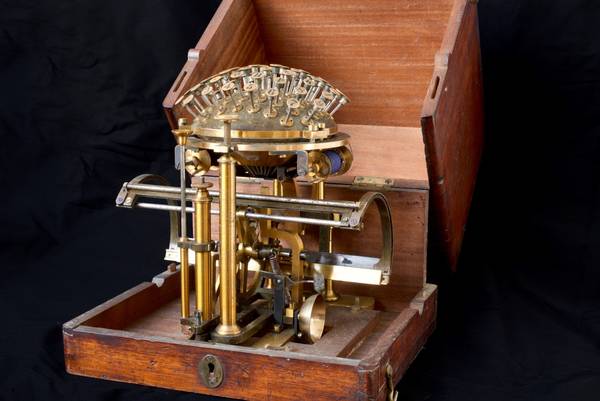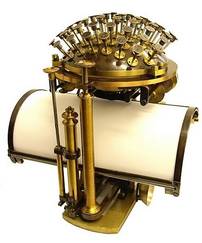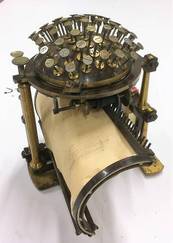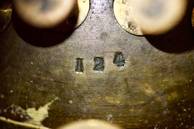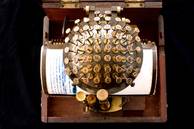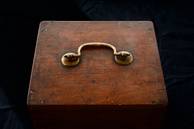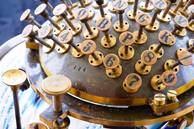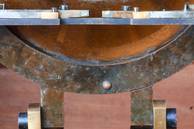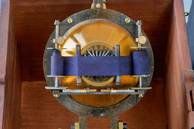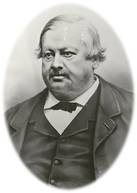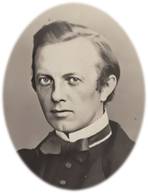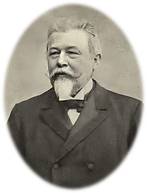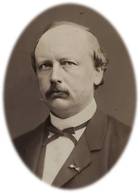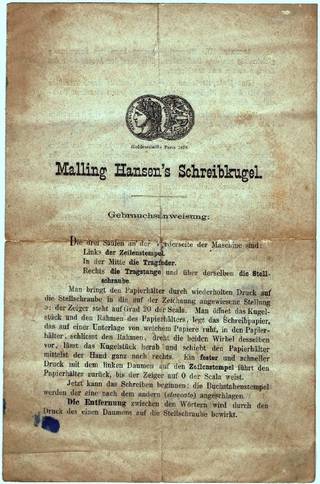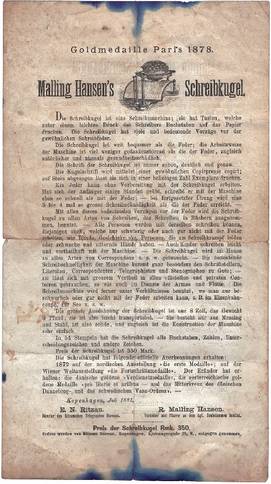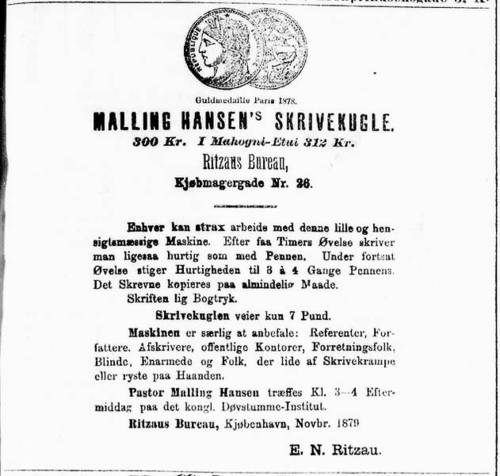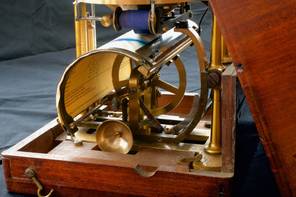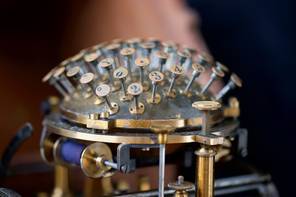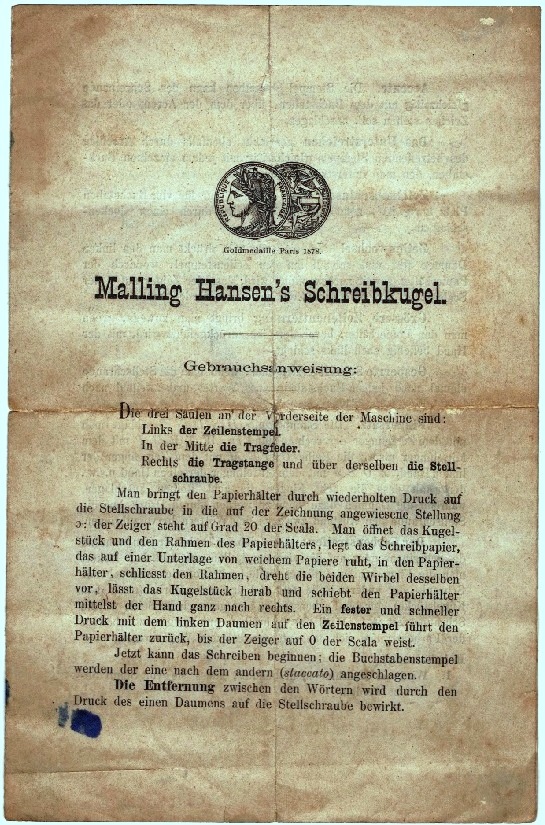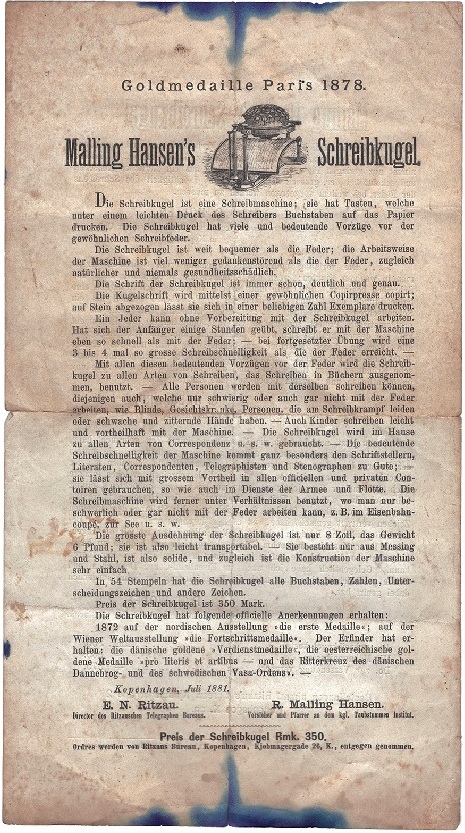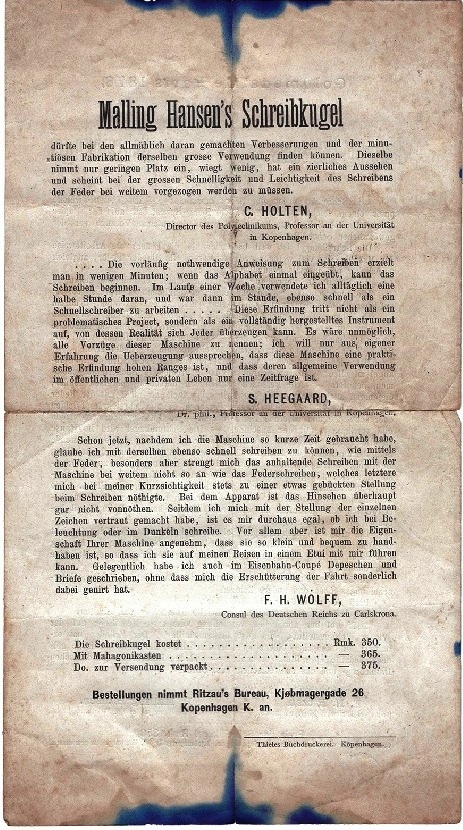Writing Ball no. 124 found!
Text by Jørgen Malling Christensen, illustrations by anonymous and Sverre Avnskog.
We are very happy to be able to announce the discovery of yet another writing ball!
It is confirmed to be serial number 124, small digit 6 – hence 124/6, produced in 1882, a portable model with ribbon. As can be verified by the extraordinarily clear and beautiful photos, it appears that all parts are intact. There is no sign of damage or repair. The brass and steel parts are still shiny. It comes with the original mahagony box. The machine is, in all likelihood, identical to the famous no. 125, the Nietzsche writing ball, which was restored and ambitiously documented by one of our founding members, Dieter Eberwein[1]. Hence, since we know the WB 125 in detail, we also know its brother – no. 124. It is truly a small and handy machine, easy to travel with: the height is 21,6 cms, the width 18 cms and the weight is merely 3,5 kilos!
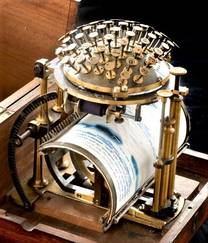
- It's great news to the RMH Society that writing ball no 124 has become known to us! Here it is photographed in the mahogany case. Photo: Private.
Not only does the writing ball seem to be completely original and in excellent shape; it also comes with its original ribbon and case and with two very important documents: 1) An information sheet with details about the international awards won by the writing ball, as well as glowing recommendations by three prominent users: a)Carl Valentin Holten (1818-1886), professor of Polytechnic of the University of Copenhagen; b) Poul Sophus Vilhelm Heegaard (1835-1884), Dr.Phil., professor of philosophy of the University of Copenhagen; c) and Franz Herman Wolf[2], German Consul at Carlskrona, Sweden. We are informed, that the writing ball can be ordered from Ritzaus Bureau, Kjøbmagergade 26, Copenhagen, and the price was 350 Marks; with mahagony case: 365 Marks. In Danish kroner the price was 300, and 312 with the mahagony case.
The information sheet is signed by E.N. Ritzau and by Rasmus Malling-Hansen. Ritzau and Malling-Hansen were close friends; they would meet regularly with two other friends to play cards (“L’Hombre”), Ritzau was Malling-Hansen’s sales agent for many years, and he also loaned him money.
We note that the information sheet is dated July 1881. The entire year of 1881 Malling-Hansen ran an intensive advertisement campaign in several Danish daily newspapers, extolling the usefulness of the writing ball.
Interestingly enough, Malling-Hansen’s mechanic for the production of writing balls from sometimes around 1882 (SA: In my opinion probably from 1885) was ‘mechanicus’ August Lyngbye, whose workshop was also in Købmagergade 26.
The second document is a manual in German language with precise and detailed instructions about how to use and maintain the machine. This manual is the first one found in German lanuage! It certainly adds to the uniqueness of writing ball no 124! And according to Dieter Eberwein, we can now be certain that the same manual (and the information sheet) was also included when Malling-Hansen supplied writing ball no 125 to Friedrich Nietzsche!
This instruction manual can be compared to a handwritten manual found in connection with writing ball no 126/10, owned by a Danish Museum: see our article (in Danish) “Skrivekugle nr 126/10; håndskrevet brugsanvisning”
The photos of these two newly emerged documents are of such good quality that we can easily read the entire text. However, we will, at a later stage, transcribe the two texts and also translate them into English.
Meanwhile: you can feast your eyes on the extraordinarily beautiful photos!
One of our key tasks of the International Rasmus Malling-Hansen Society is to find, investigate, register and document all existing writing balls. For several years we have not had the pleasure of being able to discover a new specimen of the writing ball. The last major find was made in Stockholm in January 2015 under spectacular circumstances: See our article “A true fairy tale about writing ball no 102”.
By request from the private owners of writing ball no. 124 we will conserve their anonymity. All we can tell you is that this wonderful specimen is 100 % genuine; it is a family heirloom; and it has belonged to the family for generations.
[1] JMC: Dieter Eberwein’s excellent publication can be freely downloaded from our website.
[2] JMC: Franz Herman Wolff was originally a German military engineer, specialized in the construction of fortifications. In 1862 he settled in the eastern archipelago of the county of Blekinge, Sweden, with the intention to acquire mining and quarrying concession rights. He established a company for mining, quarrying, cutting and exporting stone, most to Germany. At his zenit, Wolff employed 1000 workers on the islands of Tjurkö and Sturkö. He also had his own fleet of steam ships for the exports of stone (Source: Blekinge Museum).

